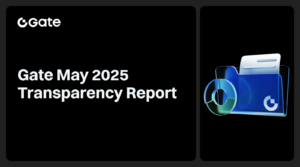The Future of DeFi: Trends and Predictions

Decentralized finance (DeFi) has emerged as a significant force in the blockchain ecosystem over the past few years. It has become a buzzword among investors, entrepreneurs, and developers who are keen on exploring new opportunities to create a more accessible and transparent financial system. With the rapid growth of DeFi, it is essential to analyze the trends and predict the future of this industry.
What is DeFi?
DeFi is a term that refers to a set of financial applications that operate on top of decentralized blockchain networks. These applications allow users to access financial services like lending, borrowing, and trading without intermediaries like banks or brokers. DeFi leverages smart contracts, which are self-executing digital contracts that automatically execute when certain conditions are met.
The Future of DeFi
The future of DeFi looks promising as more individuals and institutions recognize its potential. The industry is likely to become more mainstream as it continues to witness a massive growth in recent years. DeFi has the potential to transform the traditional financial system, and its expansion will likely lead to increased innovation and competition, which could result in better services and products for users. With the increasing adoption of DeFi, more projects and applications are expected to be developed, which will further expand the DeFi ecosystem. However, the industry must also address challenges such as security and user accessibility to ensure its continued success. As the DeFi industry evolves, we can expect more exciting developments and innovations that could revolutionize the financial industry.
Trends in DeFi
- The Rise of Layer 2 Solutions
One of the significant trends in DeFi is the rise of layer 2 solutions. Layer 2 solutions are secondary protocols built on top of a blockchain network that enable faster and cheaper transactions. These solutions aim to address the scalability issues of the underlying blockchain network. Layer 2 solutions are becoming increasingly popular in DeFi as they offer a way to improve transaction speeds and reduce costs.
- Increased Interoperability
Interoperability refers to the ability of different blockchain networks to interact with each other. With the growth of DeFi, interoperability has become an essential requirement. Several projects are working on enabling seamless interoperability between different blockchain networks to enhance the DeFi ecosystem’s functionality.
- The Emergence of Decentralized Autonomous Organizations (DAOs)
Decentralized Autonomous Organizations (DAOs) are blockchain-based organizations that are governed by smart contracts. These organizations operate in a decentralized manner, with no central authority controlling their operations. DAOs are gaining traction in DeFi as they offer a transparent and democratic way to manage funds and make decisions.
- Non-Fungible Tokens (NFTs) in DeFi
Non-Fungible Tokens (NFTs) have taken the blockchain world by storm in recent years. NFTs are unique digital assets representing ownership of a particular item or asset. NFTs are increasingly being used in DeFi to represent assets such as artwork, collectables, and other digital assets.
Predictions for the Future of DeFi
- Increased Adoption
DeFi has witnessed massive growth in recent years but is still in its early stages. The future of DeFi looks promising as more individuals and institutions begin to recognize its potential. With the increasing adoption of DeFi, the industry is likely to become more mainstream.
- Regulation
Regulatory bodies worldwide are beginning to take an interest in DeFi. As the industry grows, it is likely to attract more attention from regulators, which could lead to increased regulation. However, it is essential to ensure that regulations do not stifle innovation or limit accessibility.
- Integration with Traditional Finance
DeFi has the potential to transform the traditional financial system. However, for this transformation to occur, DeFi must integrate with traditional finance. Integrating DeFi with traditional finance could provide more accessibility and transparency to the financial system.
- Expansion of the DeFi Ecosystem
The DeFi ecosystem is likely to expand in the future as more projects and applications are developed. The growth of the DeFi ecosystem is likely to lead to increased innovation and competition, which could result in better services and products for users.
Conclusion
DeFi is an exciting and rapidly evolving industry that has the potential to transform the traditional financial system. The trends in DeFi, such as the rise of layer 2 solutions, increased interoperability, the emergence of DAOs, and the use of NFTs, indicate the industry’s growth potential. As DeFi continues to mature, we can expect increased adoption, regulatory attention, integration with traditional finance, and expansion of the DeFi ecosystem.
Despite the potential for growth, there are also challenges that the DeFi industry will face. One of the main challenges is the need for better security measures. DeFi applications are susceptible to hacks, and several high-profile attacks have already occurred. Developers must continue to focus on improving the security of DeFi applications to build trust among users.

I have been in the industry for over 5 years. I know all the latest news and what is going on with different coins. I write about Bitcoin, Ethereum, Litecoin, and more.







